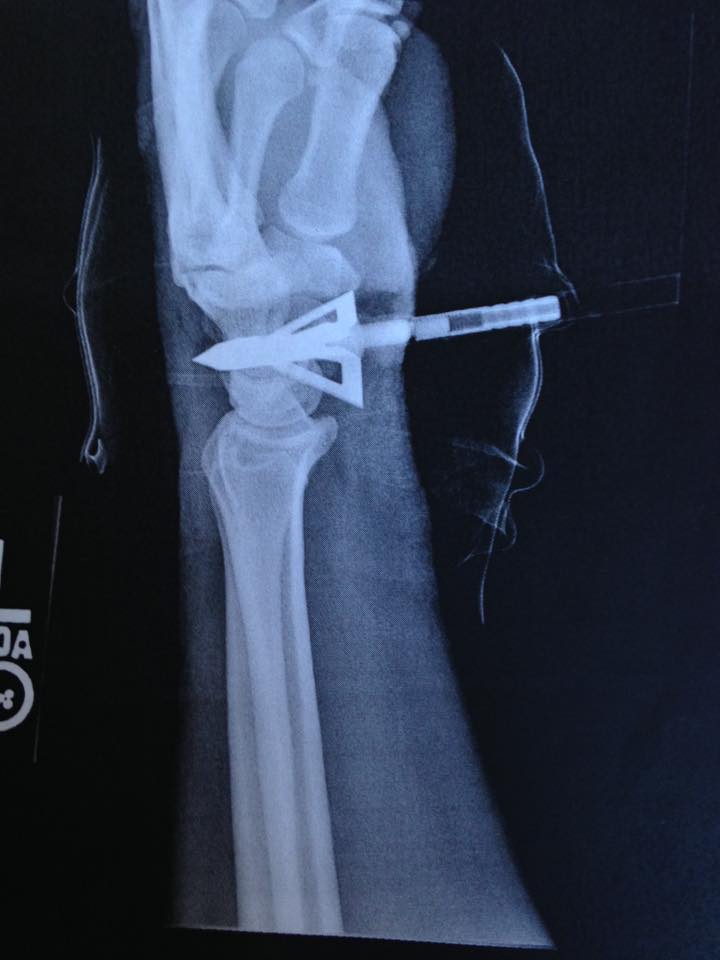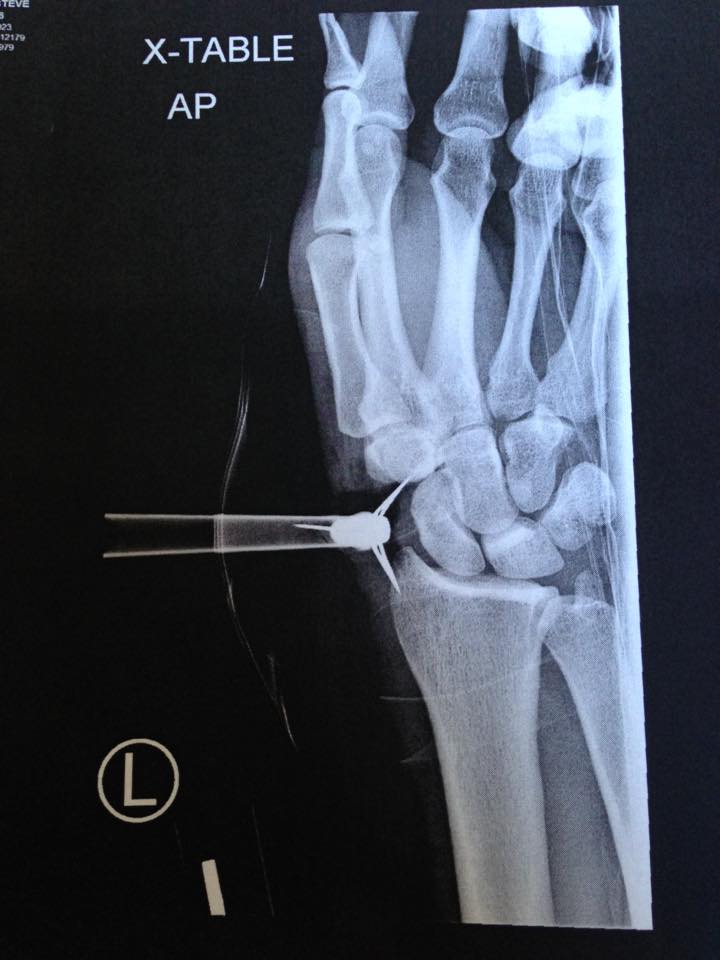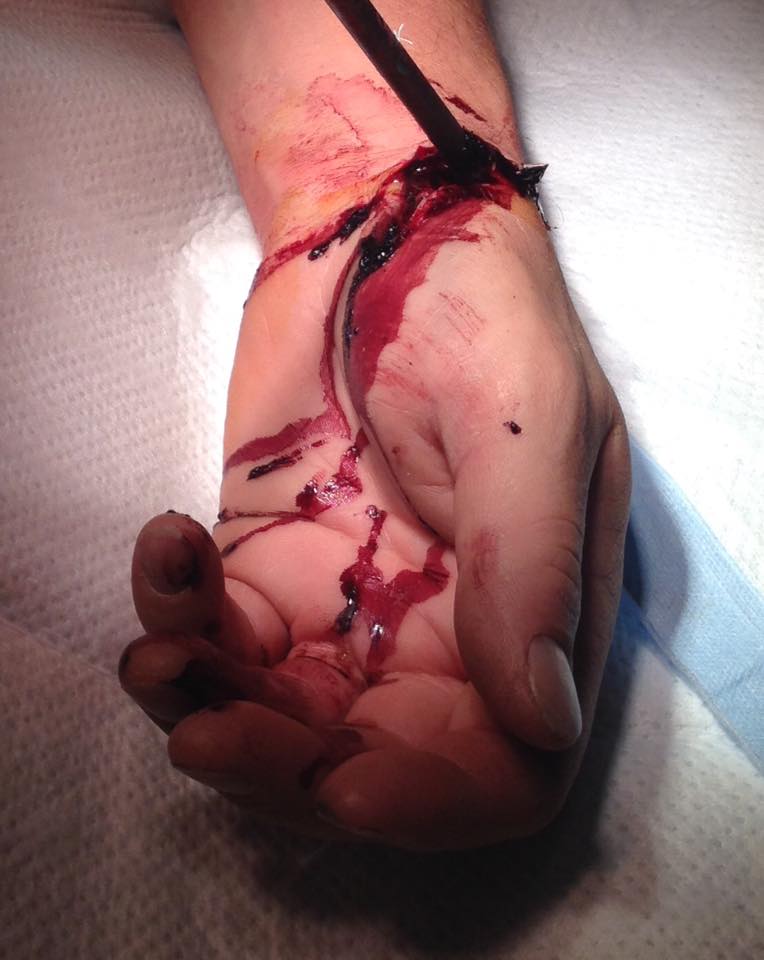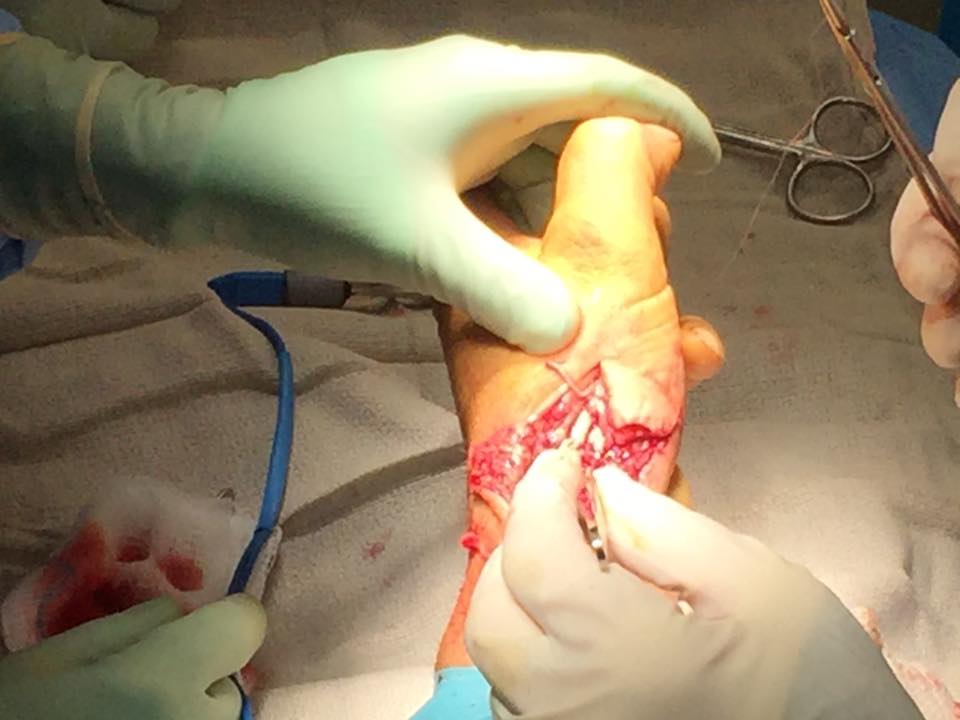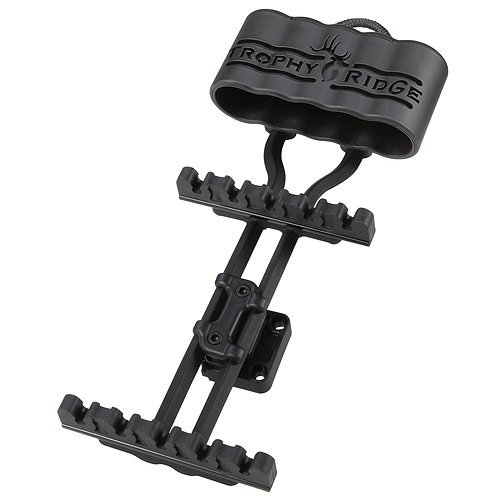by Woodsbum
This forum post was sent to me the other day. It covers the science behind EMP and Ham radios. The way that it is presented and all the science behind it are actually quite well presented.
This link is from a post on AR15.com.
****************************************************************************
So a whole lot of wailing and gnashing of teeth has occurred lately over in prepper land about EMP. I attribute this mainly due to survivalist authors looking for some easy national/global catastrophe scenario to hook into without really having much if any understanding of it. I won’t criticize specific books as some are more accurate than others, but the net result is there is a TON of disinformation out there on EMP IMO.
I am not an expert, but I am literate and do have a few letters after my name and I am an amateur radio operator with a basic understanding of physics and electronics. There are likely people on this very forum that know a shitload more about this than I do, but since no one has stepped forward to do this I’ll take a stab at it, and if those knowledgeable individuals want to correct anything I post along the way please do so. My main source of information is the following document prepared at ORNL which I will reference, since they are the experts, not me.
Big long detailed report by actual experts
So to start with:
We are talking about a very specific phenomenon known as E1 HEMP which is generated in the first few nano-seconds of a nuclear blast. This will generate a large electromagnetic field over a wide frequency range, but the worst from about 1mhz or less to about 1ghz where it really starts to drop off (Page 2-7). It is also very similar to a what happens during a lightning strike (which is actually more powerful) so a lot of measures that help with lightning strikes can also help with E1 HEMP.

One thing to clear up E1 HEMP is mostly yield independent. You don’t need a huge nuclear device to generate it, the examples in the book are 500kt (2-11).
What determines the coverage of an EMP is its height above ground, obviously the higher it is the more it affects. However the higher it is the weaker it is. The “optimal” height above ground is typically less than 100km, in their example 75km is optimal. Total coverage at that height is about 800-1000km (2-14). So it’s a fairly large are, but not the whole US by any stretch of the imagination. Also, what isn’t covered by any of the models used in the study are local terrain effects, like shadowing or reflection. These will be important locally however. So if you are in a valley and “can’t” see the nuke at 75km high, you will have some protection.
The next thing to get an idea of is how “strong” the E1 HEMP is. As with any sort of electromagnetic phenomenon it follows the inverse square law. So that means it gets weaker the further you are away from it very quickly. For comparison they use an EM field generated by a FM radio station for comparison. At 1 mile from 10KW transmitter, the peak field is .68V/m, a peak field at ground zero (directly below the nuke) will be 50,000 kV/m (its a lot), however since this falls off very rapidly with distance, average exposure will be 6.21 Kv/m (still a lot, but its not 50,000 Kv). The example states that a 10cm conductor at ground zero (50,000kV) will have an induced current of 5kV. So using the 6.21 kV average field that same conductor will have an induced charge of 621 Volts (2-35).
You can see this effect on their charts 2-29. If you have the nuke over Omaha, it F’s up Omaha, but the effects near Chicago, Denver, or Dallas are fairly minimal only .5% of the energy in the 10-100mhz range makes it out that far.

I mentioned frequencies earlier and that is both significant and important. The highest energy range is 1-10mhz. So as HAMS you should understand that means it covers the 160-30m bands the most and then drops off as it approaches UHF frequencies. It’s the wavelength that’s the concern. So most of the energy in the E1 HEMP will want to couple to things of a similar wavelength just like a radio antenna. So its typically things like cabling attached to devices (antennas, power cables etc.) that is the major concern (2-35) So unplugging your radio from the antenna is a very good idea if you are worried about this (2-38). If the device is powered chances of damage are higher (2-36), there are also other post nuclear blast effects, TREE effects (radiation) that can also damage electronics but these aren’t E1 HEMP.
When it comes to shielding against EMP, there are a lot of things discussed, but how E1 HEMP couples to things is very important and more importantly difficult to predict (2-37).
So things that EMP will couple very well to are going to be metallic things that are 30 meters long (10mhz) and longer. So power lines, telephone lines, railroad tracks and the like. Most of the report is focused on what exactly is going to happen to the electrical grid and telecommunications, because that’s where the largest vulnerability is (2-45). And ironically enough high voltage power lines aren’t actually super problematic since they are designed to withstand lightning strikes, and EMP coupling doesn’t really scale past 1km or so.
Peak current on a power line.
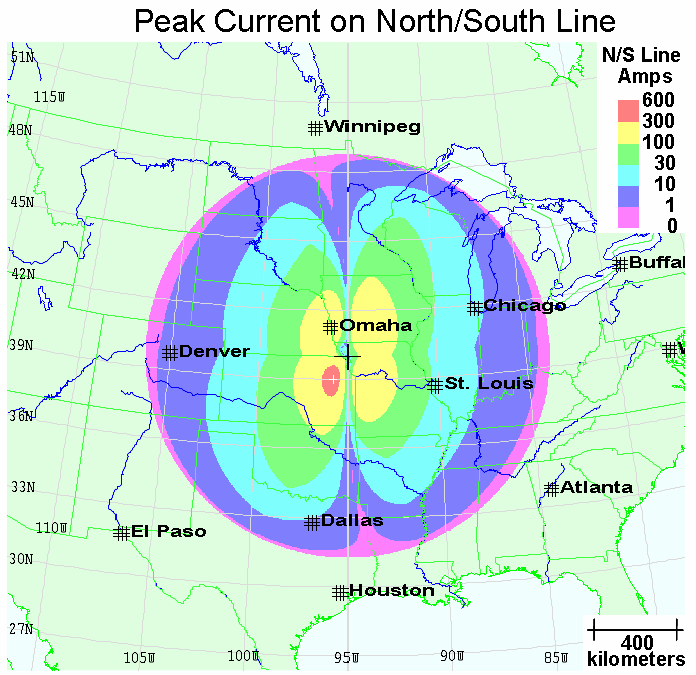
Peak currents on a 5M long vertical antenna (below)
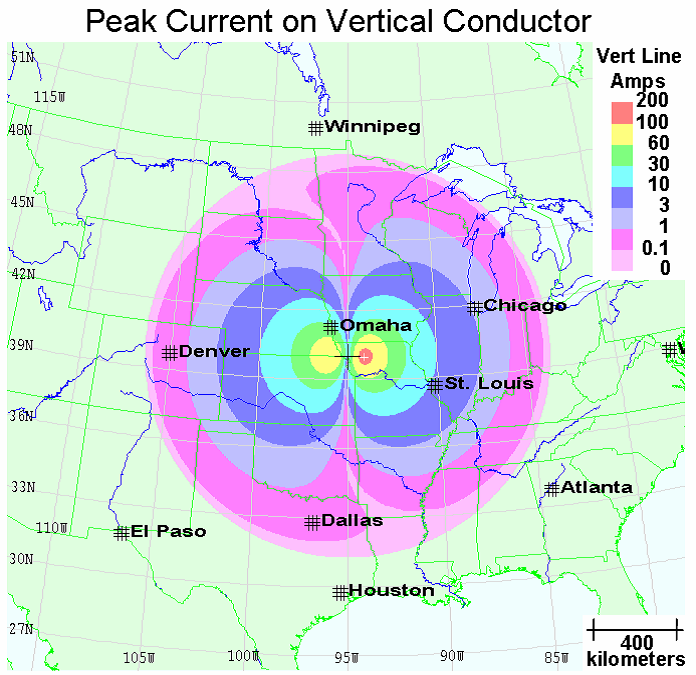
EMP and HAMs
What about the stuff you as HAM care about, a radio for example… First of all many devices, and especially radios are shielded against EMI already (2-44), which isn’t exactly the same as E1 HEMP, but it can help, there are often RF shielded modules in most radios. As I mentioned earlier, the best thing to do is not have the radio connected to the antenna when not in use, and I would argue have the antenna feedline grounded. In fact there is a huge amount of similarity between E1 HEMP and lightning strikes, so all that stuff the AARL tells you to do when constructing a shack is pretty useful when it comes to E1 HEMP.
There is a lot written about faraday cages Wiki, but I think this must be placed in the context of the frequency range you are talking about (look, they have big ass holes sometimes). The principle of waveguide cutoffs is a good one to consider (2-42), your faraday cage, and lets use the example of a metal trashcan, is probably a good and cheap EMP defense, first off its much smaller than 30m, so that big pulse isn’t going to couple to it too well, but some of the energy will be at the 1m wavelength, but that’s pretty far down the slope of the energy curve so there will be some coupling. Well what about holes or small gaps in the trashcan, yes it helps not to have them, but looking at the frequencies that will get through a 1mm gap is a 300GHZ, well above the energy generated by E1 HEMP which mostly drops to zero by 1GHZ or 300mm or about 11 inches. Also the trashcan is made of relatively (thick) metal which it needs to not be permeable i.e. skin depth (2-40) and why I would seriously doubt that ESD bags marketed for the purpose would actually be effective (no skin depth).
Myths
Finally there is a “myths” section in the very last appendix that will likely be helpful.
Cars dying: small fraction is possible (turns out your car will act as faraday cage if its made of metal) and cars are EMI shielded
Wristwatch dying: Too small to be affected by E1 HEMP.
Electronic devices that are turned off will likely fare better (true)
Conductors. Shorter is better since it will couple less with the EMP.
Conclusions
So, is EMP a viable existential threat? And the answer I think, is that its really hard to say. I think the idea of a 1 bomb EMP taking out the US is pretty non-sensical. However a 1 bomb scenario could still do significant damage to localized areas i.e. a large metro area, or for example the northeast united states. And as is mentioned in the report, EMP is largely yield independent, so even a fairly reasonable 500kt weapon could do a lot of damage. A bomb detonated above say NYC would likely take out Boston, NJ, DC etc. and the associated infrastructure. That being said, a coordinated strike involving several warheads detonated roughly around the same time could in fact take out most of the US power grid. As mentioned in the report the primary vulnerability is the power grid and telecom systems, since of course antennas will be connected to radios when the bombs go off. Smaller electronic devices are primarily vulnerable if they are plugged in at the time since the power cords can couple to the EMP and produce high voltage. Protection against EMP is a faraday cage, and probably the cheapest and best option IMO would be the famous metal trashcan example. Alternately if you need something smaller an Ammo Can would probably work just as well.
******************************************************************************
This guy really does do a great job explaining how EMPs will affect electronics and HAM radios. It actually makes me do some thinking about how I should plan for possible EMPs for such equipment as my motorcycles and my truck. Since EMPs are not just isolated to high altitude nuke blasts, preparing for such phenomenon is probably not the worst idea. Considering how bad my luck is I should be planning for a lightening strike that melts the ECM in my old Dodge. I could probably get enough parts from the junk yard to cover me for less than $200.


